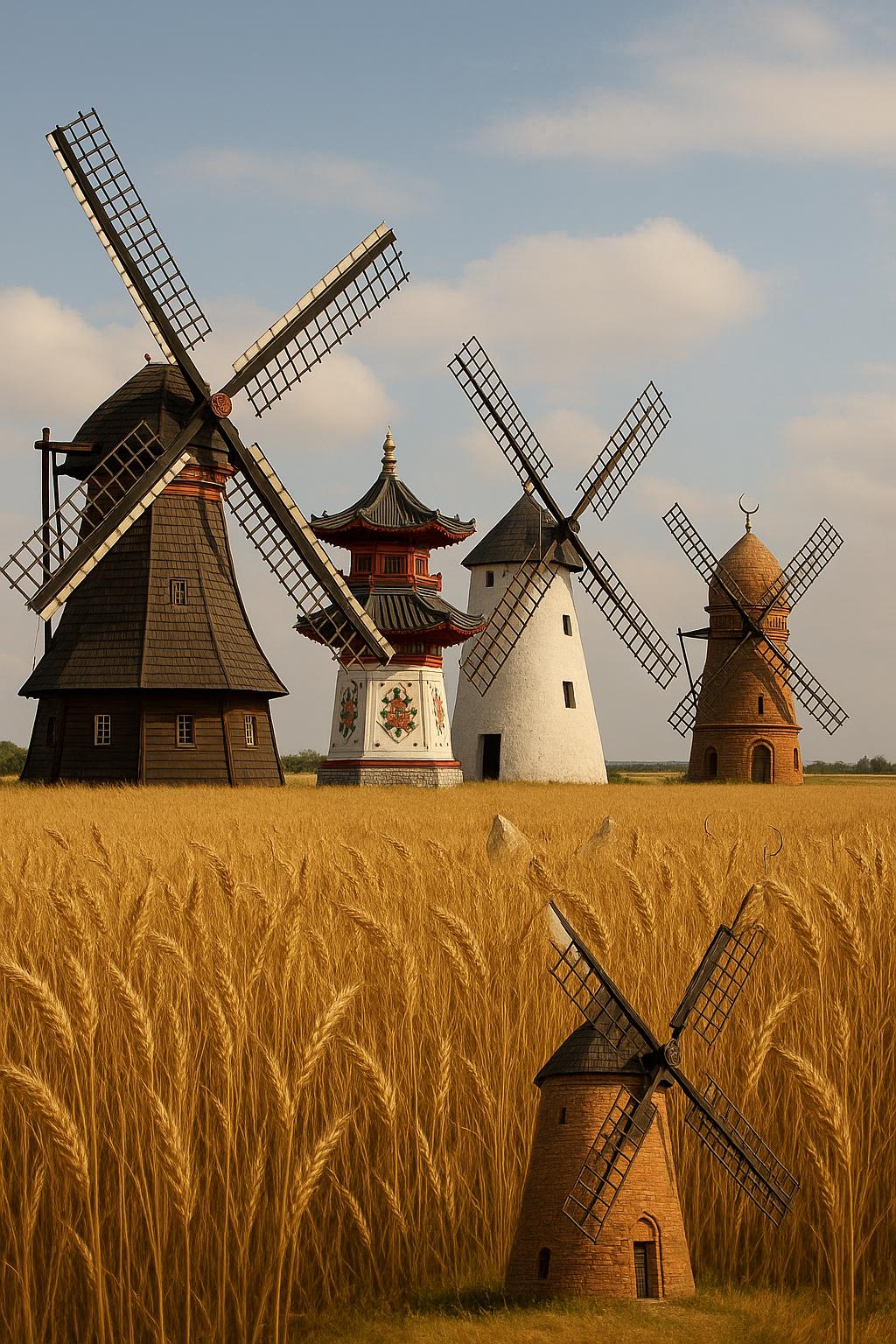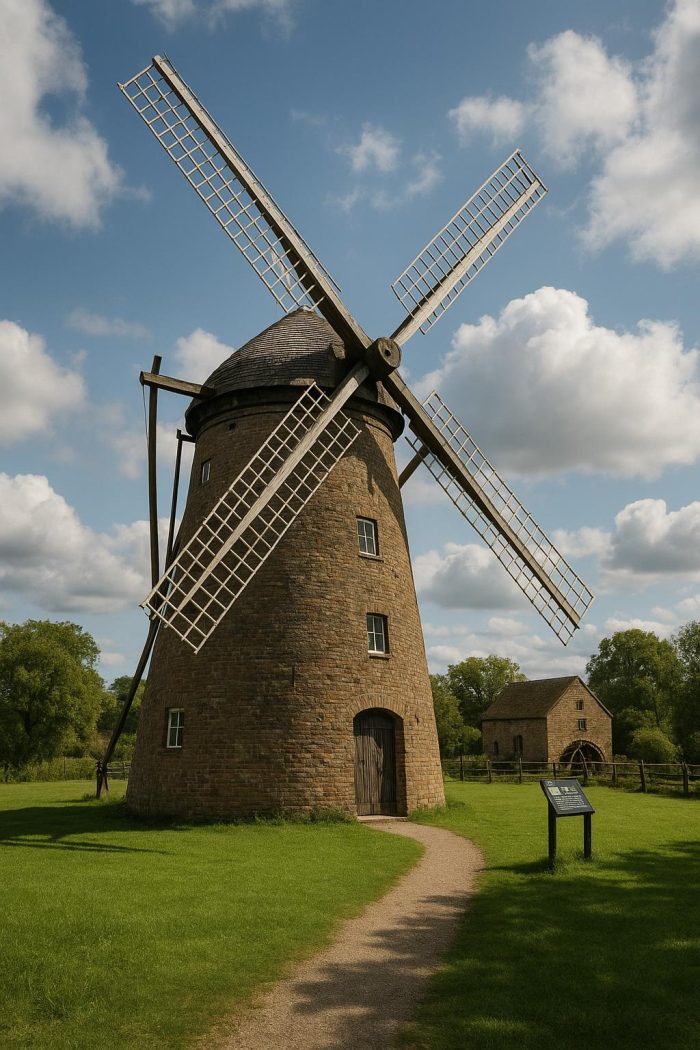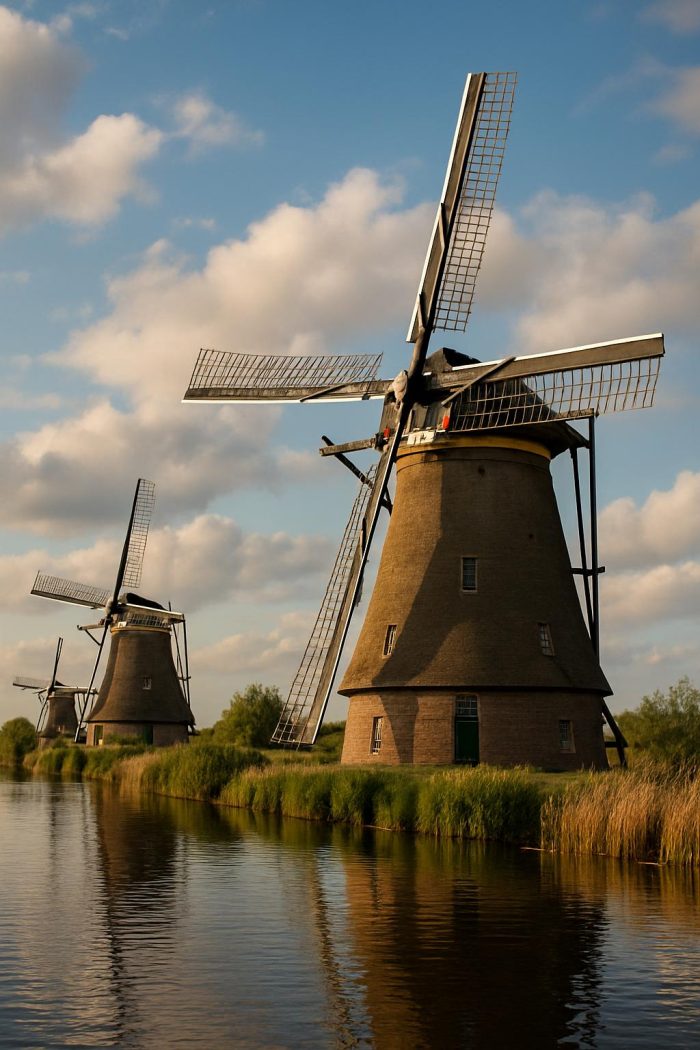Introduction to the Symbolism of Windmills
Windmills have long been iconic structures across various cultures, serving both functional and symbolic purposes. Beyond their practical application in harnessing wind energy for grinding grain or pumping water, windmills embody a range of meanings influenced by cultural contexts and historical developments.
Windmills in European Culture
Windmills stand out as significant symbols throughout Europe. Particularly in the Netherlands, these structures are prominent national icons that reflect a blend of innovation and the strategic utilization of natural resources. Dutch windmills have a dual purpose; they are not only functional but also deeply embedded in the cultural identity of the nation. Historically, these elegantly engineered structures symbolized prosperity and self-sufficiency. They played a pivotal role during the country’s developmental phase, especially in agriculture and water management, thus contributing to the nation’s growth and stability.
Furthermore, windmills have carved a niche for themselves in European literature, often bearing metaphorical significance. The phrase “tilting at windmills” originates from Miguel de Cervantes’ celebrated novel Don Quixote. In this literary masterpiece, windmills represent imaginary foes, emblematic of futile and noble battles. Over time, this narrative evolved into a broader metaphor for individuals engaging in noble yet impractical quests.
The Symbolism in Eastern Cultures
In contrast, Eastern cultures, particularly in Asia, have recently adopted windmills, attributing to them a different symbolism. In China, the ancient art of feng shui, or geomancy, heavily incorporates elements of wind. Although traditional windmills are not deeply rooted in Chinese history, modern interpretations have embraced them, associating them with ideals of balance, harmony, and positive energy harnessing from the wind.
Japanese culture, on the other hand, does not traditionally feature windmills extensively. However, in contemporary times, they are occasionally integrated into gardens and landscape designs. Within these spaces, windmills come to signify harmonious interactions between human-made structures and nature’s elements, such as the wind.
Windmills in the North American Context
In North America, windmills hold a special place in the historical and contemporary landscape. During the period of westward expansion in the United States, windmills were significant in transforming rural areas. They were vital for agriculture and water management, especially in regions that were arid. Consequently, windmills became synonymous with the pioneering spirit, symbolizing resilience and the capacity to adapt to environmental challenges.
As the dialogue around renewable energy continues to evolve, the symbolism of windmills—and their modern analogs, wind turbines—has also shifted. Today, they represent a societal commitment to sustainable development and environmental stewardship. This new functional purpose grants windmills a modern-day significance that stands apart from their conventional roles. Their ability to generate renewable energy positions them as emblems of progress in the fight against climate change.
Conclusion
Across different cultures, windmills carry varied yet profound symbolism. From representing innovation and practicality in European nations to embodying balance and integration with nature in some Asian cultures, the meanings attributed to windmills can be as dynamic as the wind they harness. Ultimately, their symbolism often bridges tradition with modernity, reflecting the evolving relationships between humans and their environment.
For those interested in exploring the cultural symbolism of windmills further, various academic resources and cultural studies delve deeper into these fascinating aspects. By examining these resources, one can gain a richer understanding of how windmills transcend mere functionality to become powerful cultural symbols over time and across regions.



